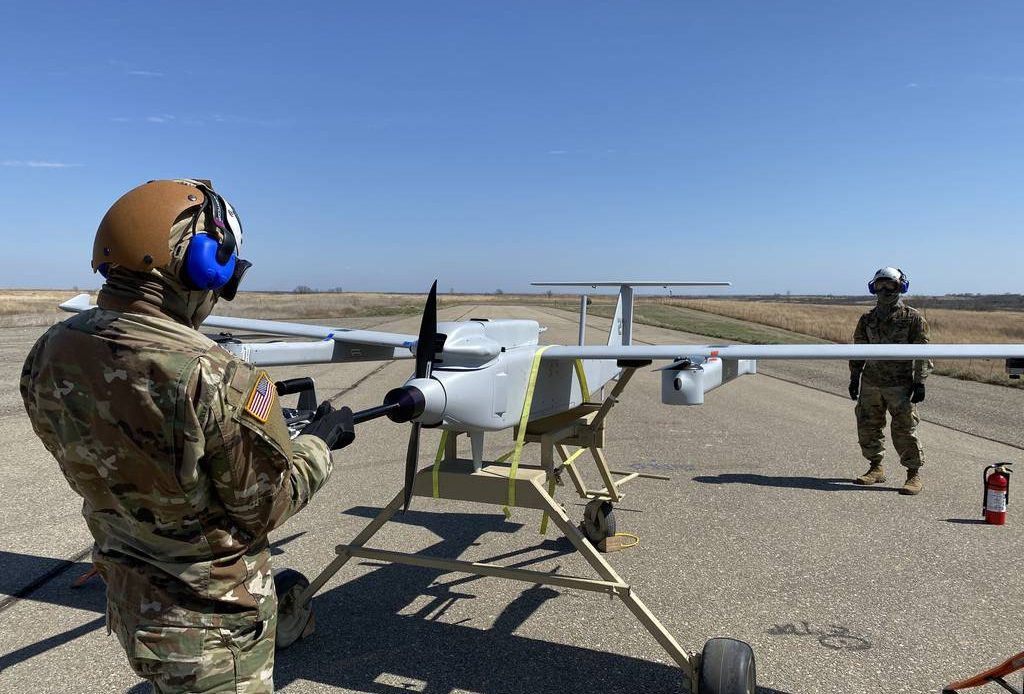
The U.S. Army approved the characteristics it wants in a Future Tactical Unmanned Aircraft System after awarding contracts to two teams competing to build the drone.
The service approved an Abbreviated Capabilities Development Document, or A-CDD, on May 17, setting up the prototyping development plan for the capability, according to Lt. Gen. Karl Gingrich, Army G-8.
While the Army decided this year to officially retire Shadow, which FTUAS would replace, there isn’t enough funding to accelerate a fielding timetable, Maj. Gen. Wally Rugen, the Army’s G-3/5/7 aviation director, said in April. Instead, the service is investing money in fiscal 2025 to buy prototypes and fly them over the next few years, Gingrich told Defense News in a May 21 interview.
“The goodness about FTUAS is going to be the plug-and-play things … that you can put on it,” Gringrich said. “The ability to put on a network extension, the ability to put a, potentially in the future, lethal payload. [Electro-Optical Infrared] sensors, [electronic warfare],” he listed.
“Because of the [modular open system architecture, because of some of the hard points that are on [the UAS], you can actually kit this out,” Gingrich said.
That flexibility means ” if you have a picture of an FTUAS that gets fielded in FY25, I bet you you have a different picture in FY27 of a different FTUAS that meets the same requirement,” he added.
“What we’re trying to do is look at it as sort of lines of effort,” Gingrich said. “You have the air vehicle itself. Well, compete it. Who has the best air vehicle? Who has the best sensor? Or sensors? Compete it.”
For the air vehicle, the Army has tapped Griffon Aerospace and Textron Systems to move into a flight demonstration phase after eliminating three other companies in a competition last fall.
Among the key characteristics for the FTUAS, in addition to rapid capability insertions, the Army wants the aircraft to be runway independent, have on-the-move command and control and soldier-led field level maintenance.
Soldiers will have a chance during the flight demonstrations to test the prototypes’ capabilities, including vertical takeoff and landing, reduced acoustic signature and rapid setup. The phase also includes Modular Open System Architecture verification efforts.
While Army senior leaders have pushed to move quickly to field tactical UAS to replace the Shadow UAS, the program has long been in the works.
The Army began considering requirements for a replacement for its Textron-made Shadow drone in 2018; by 2019, it had narrowed the pool of competitors to a Martin UAV-Northrop Grumman team, Textron Systems, L3Harris Technologies and Arcturus UAV. Aerovironment purchased Arcturus in 2021, while Shield AI bought Martin UAV in the same year.
The service evaluated the four drone offerings over a year with operational units, culminating in a spring 2021 rodeo at Fort Benning, Georgia. The Army awarded Aerovironment an $8 million contract in August 2022 to provide the Jump 20 UAS as an interim FTUAS capability for a single brigade.
Now, the Army plans to field FTUAS to the first unit equipped in 2026, Rugen said at an Army aviation conference last month.
Author: Jen Judson
Source: DefenseNews



